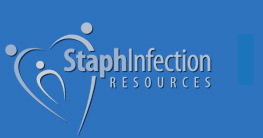Hospitals are the number one place to catch bacterial infections like Staph, MRSA and Clostridium difficile (C. diff.). A UV light device could help reduce the risks of catching an infection while in the hospital.
A common route of infection is touching contaminated surfaces in hospital rooms, such as hand rails, TV remotes and tray tables. If the prior occupant of a room had a superbug infection, then the next occupant can more easily be exposed to the bacteria from touching contaminated surfaces.
Regular cleaning and disinfecting certainly reduces these bacteria, but manual cleaning is prone to lapses in technique and thoroughness. It’s also challenging to disinfect every surface, nook and cranny inside a room using manual methods. A new device that uses UV light to help kill surface bacteria could help make hospital rooms safer from superbugs by disinfecting nearly all the surfaces inside a room.
New UV device treats entire hospital room
UV light has long been known to kill bacteria living on surfaces. A device called “SmartUVC” made by Tru-D uses UV lights to kill bacteria in hospital rooms. The device measures the room automatically to determine how long it needs to run to provide effective disinfecting. It also shuts off automatically once the correctly measured dose of UV light has been emitted inside the room. Even Clostridium difficile spores, which are hard to kill with standard cleaning agents, can be killed by the machine.
The big downside of UV light is that it’s damaging to the skin and can cause permanent eye damage. For these reasons UV light for room cleaning is technology best reserved for professional use rather than home use. Another drawback is that UV light can’t penetrate dirty areas, so surfaces must be cleaned first manually before disinfecting with UV light. Also, UV light usually needs to hit a surface directly to kill bacteria, often limiting the area it can affect.
The new device is strong enough to treat an entire room, even shadow areas where the light does not directly fall. Also, the device is safe because it immediately shuts itself off if someone enters the room and only runs as long as it needs to provide the optimal cleaning. The device is also easy to set up and can be operated remotely from outside the room with minimal supervision.
The unit has been proven to be effective in room surface studies and is being used in some hospitals now. While manual cleaning of surfaces will still be necessary, the device does help further reduce bacterial contamination, especially in hard-to-clean areas. Also, while the device does work in shadowed areas, it does a better job of decontamination on surfaces the UV light directly strikes. All in all, the Smart UVC could provide and extra level of decontamination beyond standard cleaning methods and should help lower infection rates in hospitals.
To your best health,
Michelle




